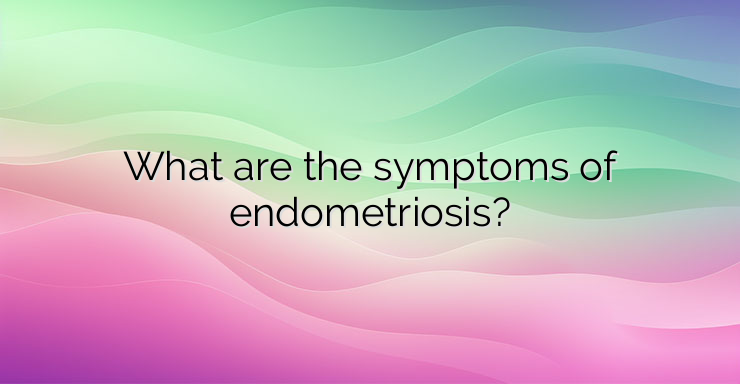Endometriosis is a chronic disease, the development of which is dependent on the action of female sex hormones – estrogens. Ectopic growth of endometrial tissue is characteristic. The endometrium is the inner layer of the uterus. This tissue can reach other organs and parts of the body, outside the uterine cavity. Common localizations are the ovaries, fallopian tubes, digestive system, pleura, cardiovascular system, central nervous system. Estrogen has been found to be of leading importance in the proliferation of endometrial tissue. Increased function of the aromatase enzyme is characteristic of endometriosis, in which deep infiltrates of endometrial tissue outside the uterus are observed. This, in turn, leads to a local increase in estrogenic activity. Also characteristic is the inability of progesterone to counteract estrogen in the endometrial tissue. This is the reason for creating a predisposing environment for the development of the disease. Endometriosis is a chronic disease that often presents with severe pain and is one of the leading causes of infertility worldwide. The symptoms tend to worsen over time, which impairs the quality of life of the affected patients. Often, the diagnosis is made a considerable time after the onset of symptoms. Chronic pain leads to neuronal changes that may be the cause of depression. Infertility is a common consequence of endometriosis, which is due to anatomical changes in the reproductive system, inflammatory processes, changes in sexual desire and reduced chances of implantation of the fertilized egg. Characteristic complaints of endometriosis are: Dysmenorrhea – painful menstruation; Episodes of spontaneous or frequently recurring pain localized low in the abdomen; Changes in urination; Pain and discomfort during intercourse – dyspareunia; Reproductive health disorders; Difficult and painful bowel movements. The late detection of the disease poses many difficulties both in terms of diagnosis and treatment. It was found that there was a relationship between the duration, severity of symptoms and the prevalence of endometriosis-specific manifestations. The most common symptoms are a combination of repeated episodes of pain located low in the abdomen, painful menstruation, or pain and discomfort during intercourse. Depending on the distribution and localization of the lesions characteristic of endometriosis, the pain can be somatic – originating from the peritoneum or visceral – originating from the uterus, bladder or intestinal tract. These two types of pain differ in their nature and character. Somatic pain is rather sharp, stabbing, and can be easily localized because the parietal peritoneum is rich in sensory nerve fibers. Visceral pain, on the other hand, is diffuse and presents with spasms. In case of severe pain, other vegetative reactions on the part of the body can be observed:Nausea; Vomiting; Feeling sick; Recurrent episodes of diarrhea that are associated with the onset of menstruation. Female patients with endometriosis are characterized by higher levels of stress, poorer sleep quality and reduced physical capacity. Other frequent manifestations are those from the gastrointestinal tract. Intestinal dysfunction may occur, causing constipation or other digestive problems. These complications are due to the inflammatory processes that lead to irritation and significant damage to the digestive system. References: https://www.ncbi.nlm.nih.gov/books/NBK567777/ https://www.ncbi.nlm.nih.gov/pmc/articles/PMC8226491/


Leave a Reply